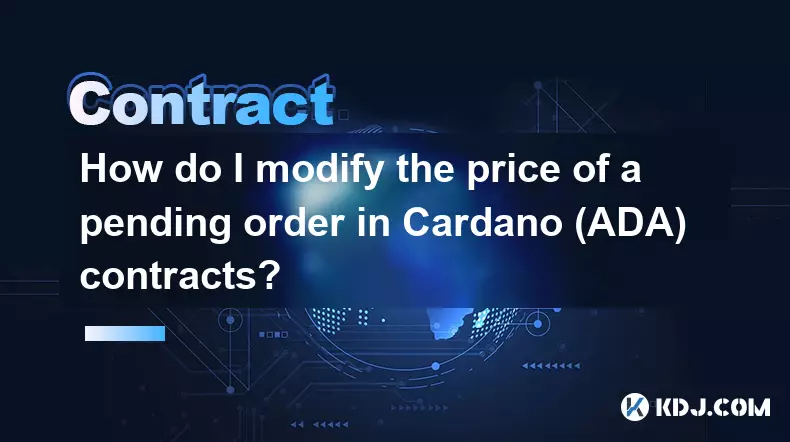-
 bitcoin
bitcoin $109523.663807 USD
-0.13% -
 ethereum
ethereum $4019.526508 USD
2.06% -
 tether
tether $1.000482 USD
0.00% -
 xrp
xrp $2.776815 USD
0.18% -
 bnb
bnb $958.942396 USD
0.12% -
 solana
solana $204.294698 USD
3.84% -
 usd-coin
usd-coin $0.999693 USD
0.00% -
 dogecoin
dogecoin $0.232115 USD
2.09% -
 tron
tron $0.338028 USD
0.84% -
 cardano
cardano $0.790920 USD
1.50% -
 hyperliquid
hyperliquid $44.871443 USD
5.60% -
 ethena-usde
ethena-usde $1.000322 USD
0.04% -
 chainlink
chainlink $21.034165 USD
2.60% -
 avalanche
avalanche $28.794831 USD
-0.54% -
 stellar
stellar $0.360466 USD
1.24%
How can I hedge using futures contracts?
Crypto traders use futures to hedge against volatility by shorting contracts proportional to their spot holdings, balancing risk during uncertain markets.
Sep 17, 2025 at 08:36 pm

Hedging Against Market Volatility with Crypto Futures
1. Traders in the cryptocurrency market frequently use futures contracts to protect their portfolios from sudden price swings. By taking an opposite position in the futures market compared to their spot holdings, investors can offset potential losses. For instance, someone holding a large amount of Bitcoin can short Bitcoin futures to reduce downside risk if prices drop.
2. This strategy is particularly effective during periods of high uncertainty, such as regulatory announcements or macroeconomic shifts. When volatility spikes, the value of physical assets may plummet, but gains from short futures positions can balance those losses. The key is aligning the size and timing of the futures position with the underlying exposure.
3. Leverage plays a significant role in how effectively futures can hedge risk. Most crypto futures platforms offer high leverage, allowing traders to control large positions with minimal capital. While this amplifies potential profits, it also increases liquidation risks if the market moves against the hedge.
4. It's essential to monitor funding rates when using perpetual futures for hedging. Positive funding rates mean longs pay shorts, which can benefit a short hedge over time. However, prolonged negative funding could erode returns, making it necessary to evaluate cost efficiency regularly.
5. Diversifying across different exchanges and contract types enhances reliability. Some platforms may experience delays or technical issues during sharp moves, so spreading hedges across multiple venues ensures execution stability.
Selecting the Right Futures Contract Type
1. Not all futures contracts serve the same purpose in a hedging strategy. Quarterly futures settle on a fixed date and are ideal for long-term protection. Their pricing often reflects broader market expectations, making them stable instruments for extended hedges.
2. Perpetual futures do not have an expiration date and are marked to the spot price frequently. These are more suitable for dynamic hedging where adjustments are made daily. Their continuous nature allows traders to maintain positions indefinitely without rolling over.
Traders must assess whether time-bound or open-ended contracts better suit their risk timeline and portfolio structure.3. Inverse futures, denominated in cryptocurrency rather than fiat, introduce additional complexity. Price changes affect both the asset value and the margin used, requiring careful calculation to avoid unexpected margin calls.
4. Linear futures, settled in stablecoins like USDT, provide clearer valuation and are easier to manage. They eliminate currency fluctuation within the margin account, simplifying profit and loss tracking.
5. Choosing between centralized and decentralized futures platforms also impacts execution. Centralized exchanges typically offer deeper liquidity, while decentralized protocols provide censorship resistance and transparency through on-chain settlement.
Calculating Hedge Ratios and Position Sizing
1. Accurate hedging requires determining the correct hedge ratio—the proportion of futures contracts needed to match the spot exposure. A 1:1 ratio means each dollar of spot holdings is offset by one dollar of futures short position.
2. Adjustments may be necessary due to basis risk, which is the divergence between spot and futures prices. If the futures price trades at a premium (contango), the hedge might underperform during drawdowns unless rebalanced.
3. Volatility-based models can refine hedge ratios. Assets with higher historical volatility may require larger futures positions to fully cover downside risk, especially over short timeframes.
Improper sizing can lead to over-hedging, which caps upside potential, or under-hedging, which leaves residual risk exposed.4. Portfolio managers often use beta-adjusted hedge ratios when dealing with altcoins. Since smaller cryptocurrencies tend to move more aggressively than Bitcoin, their hedge ratios are scaled according to correlation and relative volatility.
5. Regular recalibration is crucial. As spot prices change, the original hedge ratio drifts. Automated alerts or algorithmic tools help maintain alignment between futures positions and current portfolio values.
Risks and Limitations of Futures Hedging
1. Liquidation risk is one of the most pressing concerns, especially with leveraged positions. A sharp rally in the spot market can trigger margin calls on short futures, forcing premature closure of the hedge at a loss.
2. Funding payments in perpetual contracts accumulate over time and can become a drag on profitability. Extended bear markets may make short positions profitable, but high positive funding rates could reduce net gains.
3. Exchange-specific risks include downtime, withdrawal limits, or sudden changes in fee structures. Relying on a single platform for hedging exposes traders to operational vulnerabilities.
Basis convergence failure—when futures prices do not align with spot prices at settlement—can undermine the effectiveness of expiry-based hedges.4. Regulatory scrutiny around derivatives trading varies by jurisdiction. Some countries impose restrictions on retail access to crypto futures, limiting available tools for certain investors.
5. Psychological factors also play a role. Maintaining a losing hedge during a strong bull run can be challenging, leading some traders to exit prematurely and forfeit protection when it’s most needed.
Frequently Asked Questions
What happens to a futures hedge if the exchange goes offline during a crash?If a centralized exchange becomes inaccessible during extreme market stress, the hedge cannot be adjusted or closed. This creates slippage risk and potential liquidation without recourse. Using multiple exchanges or decentralized protocols reduces dependency on a single point of failure.
Can I hedge an altcoin position using Bitcoin futures?Yes, but it introduces basis risk. Since altcoins often outperform or underperform Bitcoin during market cycles, the correlation is imperfect. Beta-weighted adjustments can improve accuracy, yet residual exposure remains.
Do funding rates make perpetual futures unsuitable for long-term hedging?Not necessarily. While funding costs accumulate, they reflect market sentiment. In bearish environments, short positions receive payments, turning the hedge into a yield-generating tool. Monitoring rate trends helps optimize entry timing.
How quickly should I rebalance my hedge after a major price movement?Rebalancing should occur immediately after a significant move—typically above 5% in the spot price. Delaying adjustment leads to mismatched exposure, increasing vulnerability to further volatility.
Disclaimer:info@kdj.com
The information provided is not trading advice. kdj.com does not assume any responsibility for any investments made based on the information provided in this article. Cryptocurrencies are highly volatile and it is highly recommended that you invest with caution after thorough research!
If you believe that the content used on this website infringes your copyright, please contact us immediately (info@kdj.com) and we will delete it promptly.
- Sleep Token's Macabre Metal: A Ritualistic Rise to Rock Stardom
- 2025-09-27 22:25:15
- BlockchainFX: Is This Presale the Next Binance?
- 2025-09-27 22:25:15
- ORDER Token's Binance Listing Ignites Crypto Rally: What Traders Need to Know
- 2025-09-27 22:30:01
- Ethereum ETFs Feel the Heat: Investors Exit as Staking Approval Looms?
- 2025-09-27 22:30:01
- Crypto Presales & Meme Coins: Hunting for the Next 100x Opportunity
- 2025-09-27 22:30:01
- Cardano (ADA) Price Prediction: Bullish Scenarios and Market Dynamics
- 2025-09-27 22:30:16
Related knowledge

How do I enable the "scalping-only" mode for Cardano (ADA) contracts?
Sep 24,2025 at 03:19am
Understanding Scalping Strategies in Crypto Derivatives1. Scalping in cryptocurrency trading refers to executing multiple short-term trades within min...

How do I add margin to Cardano (ADA) contracts?
Sep 27,2025 at 07:54pm
Understanding Margin in Cardano (ADA) Smart ContractsCardano operates on a proof-of-stake blockchain that supports smart contracts through its Plutus ...

What is the maximum position limit for Cardano (ADA) contracts?
Sep 23,2025 at 11:00pm
Understanding ADA Futures and Derivatives Market Structure1. Cardano (ADA) futures contracts are offered by several major cryptocurrency derivatives e...

What is the maker fee for Cardano (ADA) contracts?
Sep 26,2025 at 09:01am
Understanding Maker Fees in Cardano (ADA) Contracts1. The concept of maker fees applies broadly across decentralized exchanges and smart contract plat...

How can I view open interest in Cardano (ADA) contracts?
Sep 24,2025 at 07:36am
Understanding Open Interest in Cardano Derivatives1. Open interest refers to the total number of outstanding derivative contracts, such as futures or ...

How do I modify the price of a pending order in Cardano (ADA) contracts?
Sep 27,2025 at 01:00am
Understanding Pending Orders in Cardano Smart Contracts1. Cardano operates on a proof-of-stake blockchain that supports smart contracts through its Pl...

How do I enable the "scalping-only" mode for Cardano (ADA) contracts?
Sep 24,2025 at 03:19am
Understanding Scalping Strategies in Crypto Derivatives1. Scalping in cryptocurrency trading refers to executing multiple short-term trades within min...

How do I add margin to Cardano (ADA) contracts?
Sep 27,2025 at 07:54pm
Understanding Margin in Cardano (ADA) Smart ContractsCardano operates on a proof-of-stake blockchain that supports smart contracts through its Plutus ...

What is the maximum position limit for Cardano (ADA) contracts?
Sep 23,2025 at 11:00pm
Understanding ADA Futures and Derivatives Market Structure1. Cardano (ADA) futures contracts are offered by several major cryptocurrency derivatives e...

What is the maker fee for Cardano (ADA) contracts?
Sep 26,2025 at 09:01am
Understanding Maker Fees in Cardano (ADA) Contracts1. The concept of maker fees applies broadly across decentralized exchanges and smart contract plat...

How can I view open interest in Cardano (ADA) contracts?
Sep 24,2025 at 07:36am
Understanding Open Interest in Cardano Derivatives1. Open interest refers to the total number of outstanding derivative contracts, such as futures or ...

How do I modify the price of a pending order in Cardano (ADA) contracts?
Sep 27,2025 at 01:00am
Understanding Pending Orders in Cardano Smart Contracts1. Cardano operates on a proof-of-stake blockchain that supports smart contracts through its Pl...
See all articles









































































